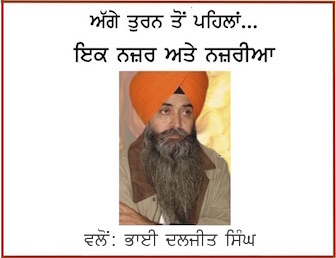Over Seas
UK complicity in Amritsar Massacre – Cabinet Secretary report has Inherent limitations: Sikh Federation UK
February 19, 2014 | By Sikh Siyasat Bureau
London, UK (February 18, 2014): According to a written statement released by the Sikh Federation UK, the recently released UK cabinet secretary’s report about UK links with June 1984 attack on Darbar Sahib confirms the fact that the review only examined files and documents from December 1983 through to June 1984.
“A review confined to this period has inherent limitations in trying to fully understand UK involvement in Operation Blue Star and the inextricably linked Operation Woodrose, which was designed to crush public protest by Sikhs in Punjab as a result of Operation Blue Star” the statement reads.
As the review was restricted to the December 1983 to June 1984 period other revelations that emerged while the review was underway have not been addressed. For instance, Cabinet papers from November 1984 show the British cabinet were under pressure from the Indian High Commission in London, who was portraying British Sikhs as troublemakers. Although the Genocide of many thousands of Sikhs had just taken place earlier that same month throughout northern India, the Cabinet documents reveal the priorities of the UK Government were relations and trade with India” the statement reads, which further states: “[t]o that end there was talk of banning a planned procession in London to mark the birthday of Guru Nanak Dev Ji, the founder of the Sikh faith. Cabinet papers from 15 November state: ‘In view of the importance of the British political and commercial interests at stake, it would be necessary to explore every possibility of preventing the march from taking place.’ The religious procession was duly banned by the Metropolitan Police. Cabinet papers from 22 November continued: ‘This posed a serious risk. Export contracts worth £5 billion could be at stake’.”
“Similarly”, the Sikh Federation statement adds, “telexes from December 1984 indicate the possible threat of sanctions by India against the UK, Germany, Canada and USA for sympathising with Sikhs in the Diaspora. The Cabinet Secretary concluded that there was no link between the assistance provided by the UK Government – including military advice to India – and UK commercial interests. However, Cabinet papers from November 1984 and telexes from December 1984 cast serious doubt on his conclusion that ‘there is no evidence that the UK . . . attempted to use the fact that military advice had been given . . . to advance any commercial objective’.”
According to the Sikh Federation UK [t]he review did not look at the latter half of 1984 nor consider representations by the Indian government and any attendant commercial pressures surrounding the events of 1984, especially in the months before December 1983 when defence-related sales to India were high up the agenda and is therefore unacceptably incomplete. Thus it remains unclear whether there was any link between UK Government military assistance and defence-related commercial interests.
“Was any other form of UK military assistance provided, such as equipment and training?”
The report also states no other form of UK military assistance, such as equipment or training, was given to the Indian authorities in relation to Operation Blue Star. This was repeated several times by the Foreign Secretary in Parliament. However, Vijayanta tanks were used in Operation Blue Star to let loose a barrage of highly explosive shells to destroy the Akal Takht Sahib, the temporal seat of the Sikhs. Vijayanta tanks were exclusively built and supplied by Vickers-Armstrongs Limited, a British engineering conglomerate.
The UK had also supplied India small arms, grenade launchers, mortars, combat vehicles, armed personal carriers and howitzers some of which may well have been used in Operation Blue Star and/or in subsequent military operations, such as Operation Woodrose and Operations Black Thunder I and II. Due to his regrettably limited terms of reference, the Cabinet Secretary’s report did not explore these matters
The Cabinet Secretary’s report did suggest that, after the SAS officer’s visit to India, HMG considered offering training, although there is no evidence in the files that any offer was made or any Indian request. However, contemporary Indian media reports suggest the Research and Analysis Wing (RAW) (the primary Indian external intelligence agency) wanted to train officers with the SAS. Indian Special Group officers made just such a recommendation after their tour of the Pontrilas Army Training Area (PATA) in Herefordshire. Media report suggests an offer was indeed made by the SAS to train Indian officers at a cost of £5,000 per officer, but that the Indian government turned down the proposal due to the high cost.
To Get Sikh Siyasat News Alerts via WhatsApp:
(1) Save Our WhatsApp Number 0091-855-606-7689 to your phone contacts; and
(2) Send us Your Name via WhatsApp. Click Here to Send WhatsApp Message Now.
Sikh Siyasat is on Telegram Now. Subscribe to our Telegram Channel
Related Topics: Bhai Amrik Singh Gill, June 1984 attack on Sikhs, Operation Bluestar, Sikh Federation UK, Sikhs in United Kingdom, UK and June 1984 attack on Sikhs, William Hague





